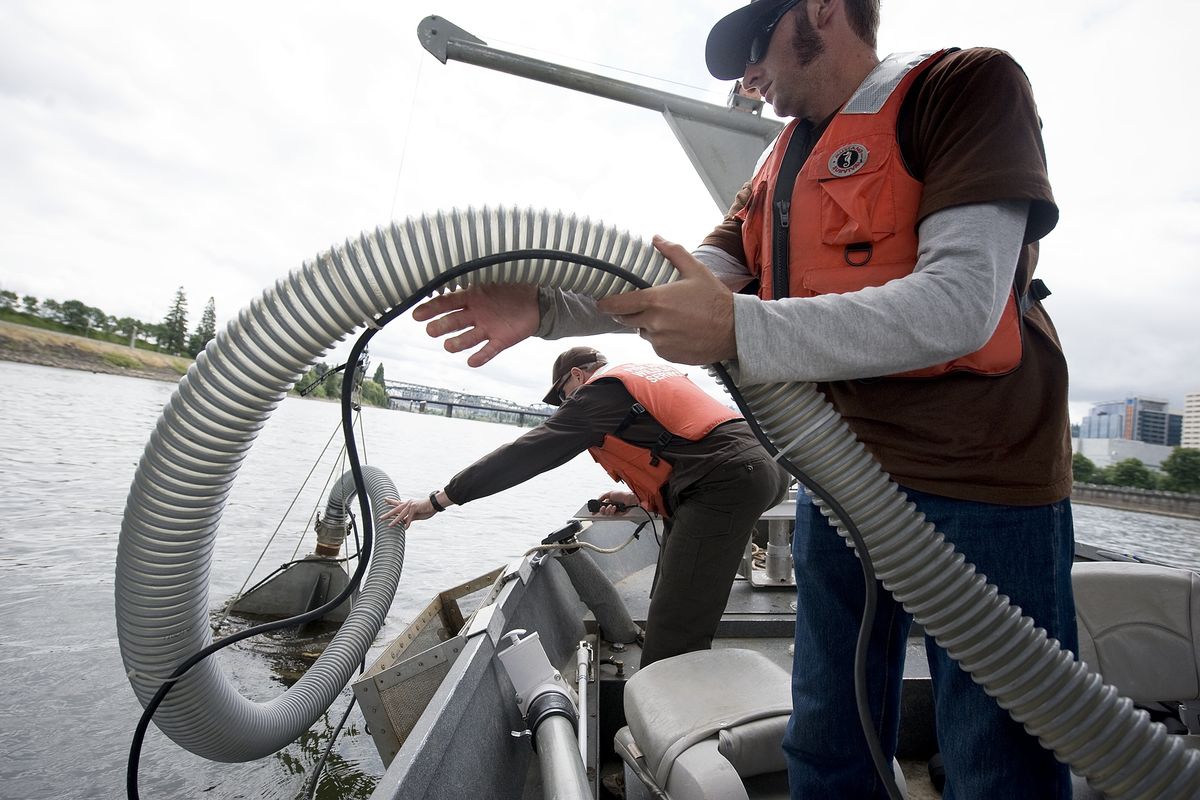Looking for larvae

PORTLAND – Lampreys have survived for 350 million years.
They’ve adapted to the coming and going of ice ages, continental drift and predators that predate the dinosaurs. Yet, researchers attribute an “alarming drop” in a West Coast population of the ancient creature to a comparably recent development: Us.
Dams, cities and agriculture have all taken a toll, researchers believe.
“The freshwater habitat where they spawn and rear has been changed and degraded with urbanization, agriculture and various land-use practices,” said Howard Schaller, project leader of the Columbia River fisheries office for the U.S. Fish and Wildlife Service in Vancouver.
In spite of its alien appearance and a flavor akin to an old tire, experts believe the jawless eel-like fish is an important building block in the marine-riverine food web. Sea lions, for example, historically sated themselves on the high oil content of the lamprey’s tissue rather than devouring many endangered salmon to get the same nutritional value.
Immense numbers of lamprey once nourished the entire food web with nutrients from the ocean.
That alone should be sufficient reason to conserve lamprey, said Bob Heinith, hydro program coordinator for the Columbia Intertribal Fish Commission. Lamprey may be the ugly cousin to the Northwest’s iconic salmon on the glamour scale, but Heinith said their importance can’t be underestimated.
“They’re the neglected species,” Heinith said, “but probably the foundation for everything.”
On a recent day at Willamette Park in Portland, Schaller joined fellow Fish and Wildlife Service researchers Greg Silver and Brian Davis.
While American Indian tribal members plucked adult lamprey far upriver at Willamette Falls, Schaller’s team attempted the trickier task of finding lamprey larvae – known as ammocoetes – ensconced in the river bottom. Previous studies have mainly involved researchers wading in tiny streams, teasing ammocoetes out of the muddy stream bottoms with backpack-mounted electrofishing gear.
Over the past year, researchers have been using an industrial-sized electrofisher lowered from a motorboat to find ammocoetes in the much broader and deeper Columbia and Willamette rivers.
“This is the first time anybody has found ammocoetes in main stem tributaries,” Schaller said.
Researchers want to know whether the lamprey larvae tend to cluster in certain areas or whether they seem to be distributed randomly. They determine the age by measuring their length and sorting out oceangoing Pacific lamprey from western brook lamprey that spend their lives within the river.
It’s not easy to find larvae, each barely the size of a sewing needle, in a river as big and broad as the Willamette.
Using a probabilistic sampling system, researchers have divvied the river’s lower 27 miles below the waterfall in Oregon City into some 30,000 squares. The program selects sample squares on a random basis, then re-sorts them to ensure they’re spread across a wide area.
Adult lamprey counted at dams have dwindled in recent years.
Yet federal authorities have declined petitions to protect them under the Endangered Species Act partly because so little is known about them. The juvenile sampling surveys on the Willamette and Columbia are intended to see whether lamprey larvae make use of heavily industrialized sections of the Columbia River basin.
“Whether they’re still living to maturity, we can’t say,” Schaller said.